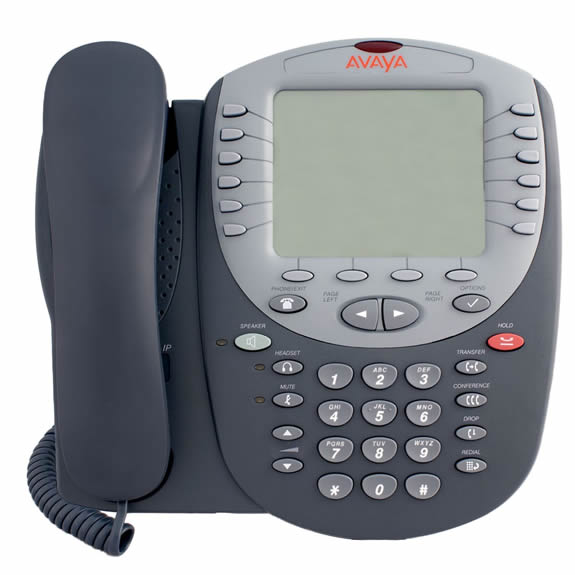Difference between revisions of "Avaya"
(created first draft on telephone howto) |
m (repeat step on the wrong place) |
||
| Line 8: | Line 8: | ||
*: * to program (after this step, you can plug in the ethernet connection again so you are able to type in the SIG command at the end) | *: * to program (after this step, you can plug in the ethernet connection again so you are able to type in the SIG command at the end) | ||
* press {{k|*}} | * press {{k|*}} | ||
| − | * confirm every default with {{k|#}} | + | * confirm every default with {{k|#}} (8x) |
| − | * at the end, it says "No new values. #=OK": confirm | + | * at the end, it says "No new values. #=OK": confirm |
* at the blank screen, type {{k|mute}}{{k|7}}{{k|4}}{{k|4}}{{k|#}} (Mute SIG#, you will notice a distinct short tick when pressing mute, and other keys being silent) | * at the blank screen, type {{k|mute}}{{k|7}}{{k|4}}{{k|4}}{{k|#}} (Mute SIG#, you will notice a distinct short tick when pressing mute, and other keys being silent) | ||
* change to SIP by cycling using {{k|*}} and confirm using {{k|#}} | * change to SIP by cycling using {{k|*}} and confirm using {{k|#}} | ||
[[Category:Telephony]] | [[Category:Telephony]] | ||
Revision as of 17:59, 2 January 2016
- only uses pins 1,2,3 + 6 (100Base-T)
- PoE compatible
- custom power module available: GND:pin 7, +48V:pin 8
- upon booting (about 20 seconds), the following message appears:
- 100 mbps ethernet (you might want to unplug the ethernet cable if the keys do not respond)
- * to program (after this step, you can plug in the ethernet connection again so you are able to type in the SIG command at the end)
- press *
- confirm every default with # (8x)
- at the end, it says "No new values. #=OK": confirm
- at the blank screen, type mute744# (Mute SIG#, you will notice a distinct short tick when pressing mute, and other keys being silent)
- change to SIP by cycling using * and confirm using #
